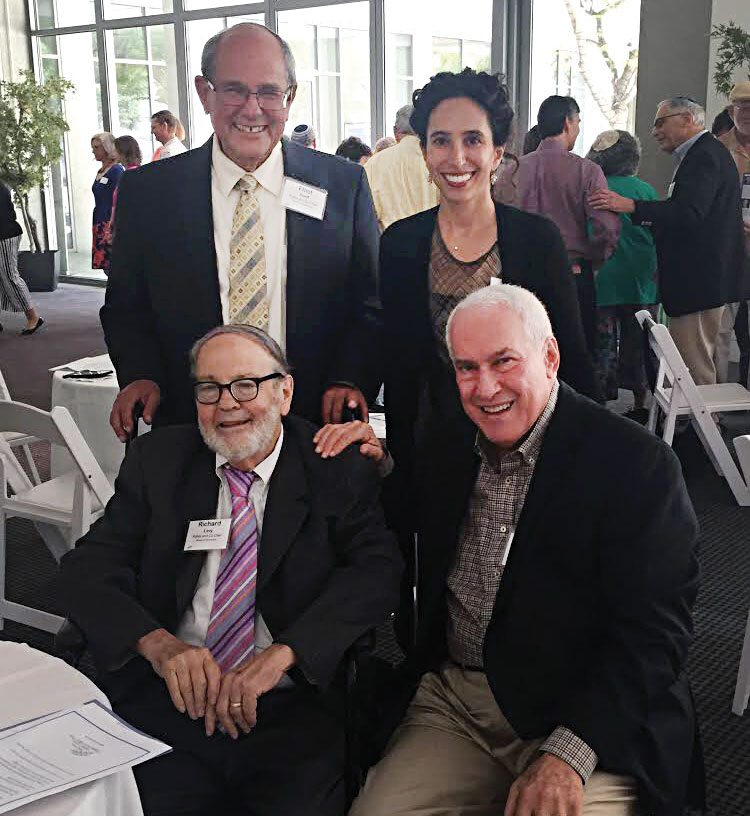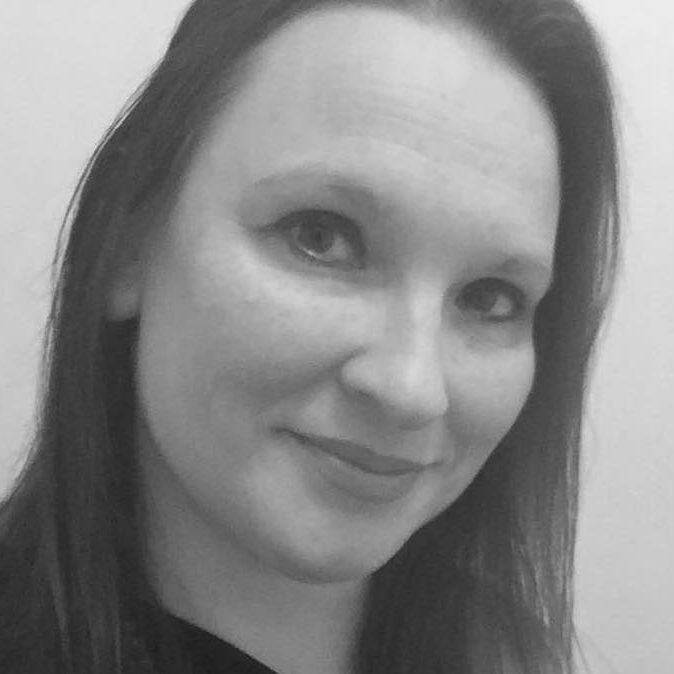 Temple Israel of Hollywood’s Rabbi Michelle Missaghieh, conversion candidate Jackie Lara, and sponsoring rabbi/dayan Rabbi Heather Miller of Beth Chayim Chadashim. Photo by Esther Kustanowitz
Temple Israel of Hollywood’s Rabbi Michelle Missaghieh, conversion candidate Jackie Lara, and sponsoring rabbi/dayan Rabbi Heather Miller of Beth Chayim Chadashim. Photo by Esther Kustanowitz For Liz Davenport, it was ladies at the mikvah. For Susan Brownstein, it was reading library books to her kids. For Jackie Lara, it was the community spirit she felt among Jews.
These were among the inspirations cited by the recent converts — or, as they’re often known, Jews by Choice — who gathered with community leaders on Aug. 6 at the Skirball Cultural Center to celebrate a milestone: 500 conversions performed by the Sandra Caplan Community Bet Din. The Bet Din is the only program in Southern California that brings together Conservative, Reconstructionist, Reform and transdenominational rabbis to cooperate in the conversion process.
Calling the converts’ devotion to their new faith “inspirational,” Rabbi Richard Levy, a co-founder of the Bet Din along with Rabbi Elliot Dorff, said, “You are here, here we all are,
500 Jews by Choice, whether it’s yours or God’s — a remarkable number. Because the belief that God is one is the backbone of our work, let us affirm that together.” With that, he led the audience in the Shema.
Levy and Dorff were honored at the event.
The program is named for the late Sandra Caplan, who grew up Catholic before developing an interest in Judaism and converting in 1980 through the University of Judaism, now American Jewish University (AJU). It was her deathbed wish that her husband, George Caplan, continue to support conversion-related programs.

After prospective converts complete their studies, they must be evaluated by a Bet Din — a rabbinic court of three rabbi-judges. Most succeed, although Bet Din Executive Director Muriel Dance recalled two candidates who were told they needed more preparation. But, she said, “the goal is not to turn people away.”
The Skirball event drew a mix of Jews by Choice, the Bet Din’s rabbi-judges and board members, sponsoring rabbis who advise and teach prospective converts, and other supporters of the Caplan program.
Among the rabbis in attendance were Heather Miller and Lisa Edwards of Beth Chayim Chadashim; Jonathan Kupetz of Temple Beth Israel in Pomona; Stephen Einstein, founding rabbi of Congregation B’nai Tzedek in Fountain Valley; and Michelle Missaghieh of Temple Israel of Hollywood, who also served as the program’s master of ceremonies.
Members of the Orthodox community were not represented at the event because they have not participated in the program so far. Levy, the immediate past director of the School of Rabbinic Studies at Hebrew Union College’s Los Angeles campus, said some Orthodox rabbis were pressured not to join the transdenominational Bet Din, but Dorff said he would welcome Orthodox interest.
Dorff, rector and philosophy professor at American Jewish University, said the Bet Din does “not disparage any other program for conversion. Frankly, we need Jews: the Jewish community is facing a major demographic problem,” he said, pointing to a low reproductive rate among Jews and a high rate of interfaith marriage, in which only about 20 percent of the children are raised as Jews. “Conversions to Judaism are one way to increase our numbers, and so I am in favor of any program that encourages that and does it in a serious way.”

In any case, Dorf added, the transdenominational component of the Caplan Bet Din is one of its distinctive qualities.
“People who convert can thus rightfully say that they are converting to Judaism and the Jewish community as a whole and not just to a particular denomination or segment of the Jewish community,” he said.
Davenport, who converted under the sponsorship of Rabbi Jonathan Kupetz at Temple Beth Israel in Pomona, spoke passionately about the ladies of the mikvah who oversaw her ritual immersion, calling them “precious…they made that day heavenly, like floating on a cloud.”
Brownstein said she had agreed with her Jewish husband to raise their children Jewish, but at first she didn’t convert. As their children grew, she learned about Jewish traditions by reading to them books from the PJ Library program.
“By observing the holidays and rituals, I realized I was committed,” she said. “We have a Jewish family, but I hadn’t done all the paperwork yet.” She subsequently converted through the Caplan program.
“The strength of Judaism is in its stories,” she said, “and the most important part is to try to see every day as a blessing.”
Lara, who was raised “loosely Catholic” and is an educator at Planned Parenthood, said, “We all have a story.” In her journey, she said, she found “a sense of comfort and love just being with y’all. I always asked questions and you were happy to respond.”
She further said that she had “embarked alone” on her search for Judaism, in which she found a sense of agency in her faith, and was drawn to the concept that “one wrestles with God.” She also spoke about having been driven by tikkun olam (fixing the world), “doing mitzvot that we as Jews understand.”
In an interview with the Journal before the Skirball event, conversion candidate Mei-Ling Hubbard said that she was an “atheist as a kid but with a deeper sense of spirituality.” As a biracial woman, she said, “I have never felt at home anywhere; I don’t fit in with white or Chinese people.” But she had a lot of Jewish friends and would joke that “I was looking for a Jewish guy so I could convert … then why don’t I just do it?”
Her conversion, she said, “felt like a homecoming in a sense. For the first time, I have entry to a group that I feel a part of and feel at home with. I am a Jew and that’s a powerful thing, to belong in a way I never felt before. My identity is different now in a more inclusive way.”
Dean Sprague, the actual 500th convert, was unable to attend the event but in an interview described what being a new Jew felt like.
“There’s a big emphasis on getting you to be more mindful and aware of things, whether it’s the seasons of the year, changes to prayers, food you eat — how you eat and prepare it — you’re not taking things for granted,” Sprague said. “It’s not separating yourself from the physical world, rather it’s an opportunity to elevate the physical world into something spiritual and better. Make a blessing, follow the specific rules — taking everyday, normal, mundane activities and giving them a sense of spirituality.”
For all its success in minting new Jews, the Caplan program still faces challenges. Dorff said he wanted more rabbis to participate as judges, and that raising the funds for their $25,000-a-year budget can be a challenge for the nonprofit organization.
In her closing remarks, Missaghieh urged attendees to refer interested potential conversion candidates to the Caplan program and to visit the website at www.scbetdin.us for ways to support the Bet Din and its Jews by Choice.





















 More news and opinions than at a Shabbat dinner, right in your inbox.
More news and opinions than at a Shabbat dinner, right in your inbox.